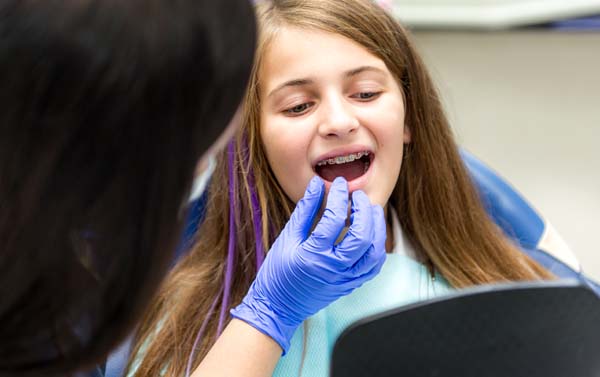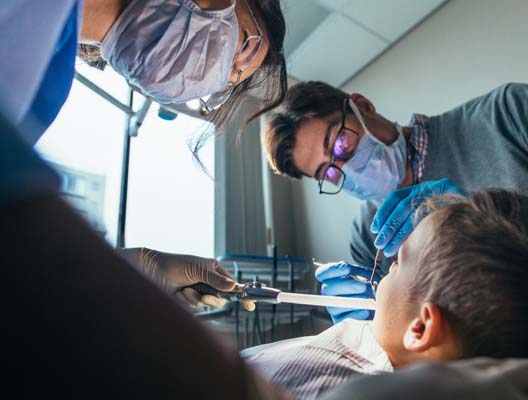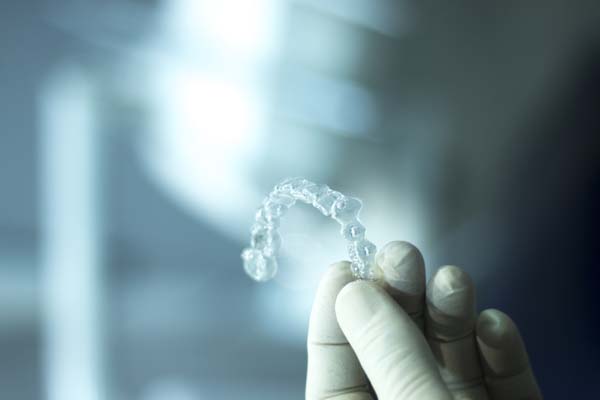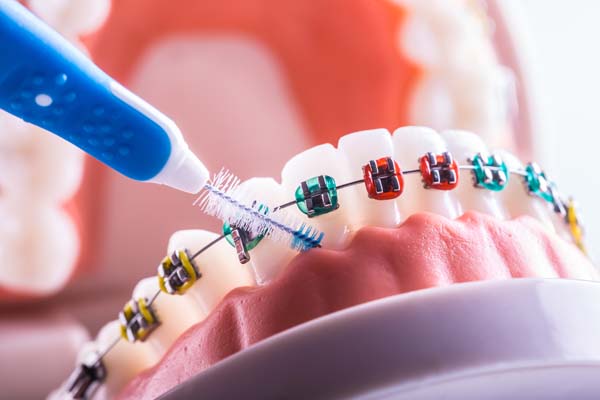Early Orthodontic TreatmentLawndale, CA
Most children have crooked or crowded teeth. Early orthodontic treatment can help children’s permanent teeth come through properly. This early intervention can minimize the risk of more severe orthodontic issues later on.
We provide early orthodontic treatment at Hawthorne Orthodontics in Lawndale and the surrounding area. As an orthodontist, our team can determine whether early intervention is right for your child. Call us today at 310-921-8333 to learn more about our services or schedule an appointment.
What Is Early Orthodontic Treatment
Early orthodontic treatment is an orthodontic intervention that occurs before the complete eruption of permanent teeth. It is also known as Phase I of orthodontic treatment or interceptive orthodontics. This treatment aims to correct developing problems, eliminate the cause, guide the growth of facial jawbones, and provide enough space for incoming adult teeth.
Early orthodontic treatment is available since some orthodontic problems are easier to correct with early detection and treatment. Correcting some problems can become more difficult when parents wait until their child’s permanent teeth have come in or their facial growth is nearly complete. It is important to keep in mind that children may still require a second course of treatment after all their permanent teeth have come in to move those teeth into alignment. Depending on the patient’s situation, early treatment may shorten Phase II treatment length.
When to Get Early Orthodontic Treatment
According to the American Association of Orthodontists, children should have their first orthodontic consultation by age seven when their adult teeth are beginning to emerge. By the age of seven, children will have enough adult teeth to evaluate the developing jaw and teeth. This consultation provides parents with a better idea of what treatment their child may need later and what can be done during Phase I to reduce the need for future treatment. We recommend early treatment for patients with problems that could become more serious over time without treatment. If we find any of these problems, we will recommend Phase I treatment to address the underlying problems.
Serious issues that can prevent normal development from progressing and may require early treatment include:
- Crossbites
- Excessively spaced teeth
- Extra teeth
- Missing teeth
- Teeth that do not meet
- Teeth that meet abnormally
- Very crowded teeth
Early Orthodontic Treatment Options
There are different early orthodontic treatment options available depending on the issue that needs correcting. We may recommend a fixed or removable orthodontic device to move teeth, change the jaw’s position, or hold teeth in place. An orthodontic device is unnecessary in other cases, and we may choose to extract some baby teeth to help permanent teeth erupt better.
The most common types of early interceptive treatments include palatal expanders and partial braces. Palatal expanders are devices that gradually widen a child’s upper jaw to create more space in their mouth. Partial braces are placed on the upper or lower front teeth to provide early minor correction to crooked teeth. Other treatments can include specialized retainers, space maintainers, headgear, and more. Parents can discuss the available options with our team during a consultation.
When Early Orthodontic Interception Is Unnecessary
Not every child will need early orthodontic treatment. Children without noticeable concerns related to their jaw alignment or teeth may be able to wait until Phase II orthodontics for treatment. The best way to determine whether early treatment is necessary is to have a check-up.
Our team can help determine whether early orthodontic treatment can benefit your child. We can perform X-rays and conduct an oral examination to see how the permanent teeth and the jaw are developing during a consultation. If early orthodontic interception is unnecessary, it is important for children to receive regular checkups in order to monitor the growth and development of their teeth. This way, we can begin treatment when necessary.
Benefits of Early Orthodontic Treatment
Timing has serious implications for the development of a child’s smile. Children that need orthodontic interception can benefit from early treatment to reduce the need for complex orthodontic treatment such as permanent tooth extraction or corrective jaw surgery. Rather than waiting for an orthodontic abnormality to develop fully, early treatment can prevent it from occurring in the first place.
There are additional benefits to early treatment since children are still growing. Children’s hard tissues are more responsive to forces, while their soft tissues are more adaptable, enhancing the treatment’s results. Other benefits include the prevention of unwanted tooth movement and the ability to guide jaw growth and tooth movement so that permanent teeth move into the correct position. We can also better resolve certain issues such as crossbites, leading to teeth and bone damage.
Call Us Today
Timing is crucial when it comes to orthodontic treatment. Visit our team and give your child the best opportunity for a healthy, beautiful smile. Call us today at 310-921-8333 to learn more about our services or schedule an appointment.
Frequently Asked Questions
When are palatal expanders necessary?
The most common reason children receive early orthodontic treatment is abnormal jaw formation. Palatal expanders are necessary when a child’s jaw is not wide enough for permanent teeth to grow in. A wider jaw allows for quicker and more effective orthodontic treatment.
Can I wait on starting Phase I treatment until my child is older?
We do not recommend waiting on starting Phase I treatment if a child needs it. If a child needs Phase I treatment, they have a problem that needs treatment soon. Without interception, treatment options can become limited, more difficult, and compromise the long-term stability.
Why is it easier to move teeth when people are younger?
When people are younger, their bones, including jaws, are more malleable. Teeth and gums are most malleable during childhood when growth is still occurring. As people get older, their bone structure sets in place, making it more difficult to move teeth in certain ways.
Are braces necessary during Phase I treatment?
The best time for braces depends on the child’s individual needs. Most children will not need braces until all of their permanent teeth have erupted. However, some children will need to receive braces early due to poor development of their teeth and bite. We will determine the right timing and treatment for your child.
How long does Phase I treatment take?
Phase I treatment aims to develop a child’s jaws to allow room for incoming adult teeth and improve the upper and lower jaw alignment. The length of Phase I treatment will vary for each child and their unique needs. On average, Phase I treatment takes between nine and 18 months.





